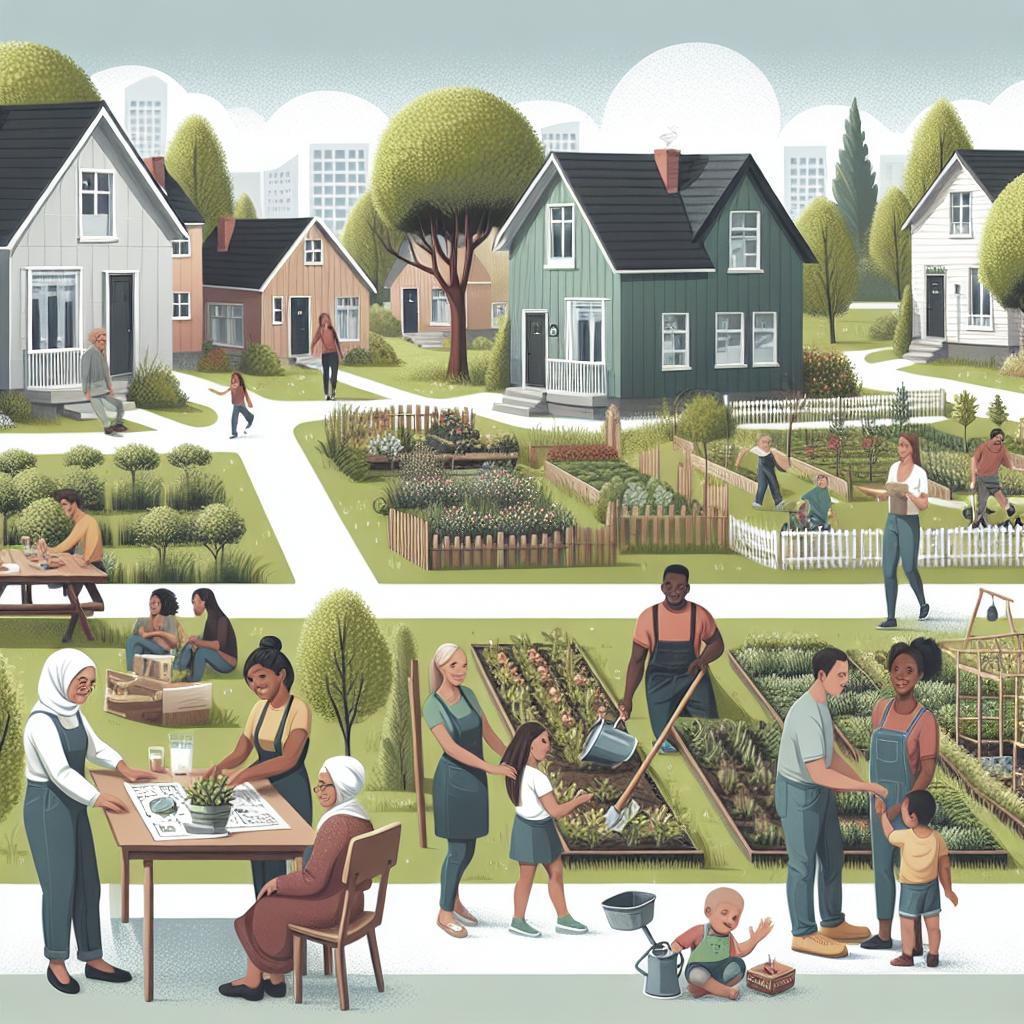Understanding the Principles of Cooperative Housing
Cooperative housing is an innovative approach to living arrangements, where residents collectively own and manage their homes. This model promotes community, affordability, and sustainability. In this blog post, we will explore the principles of cooperative housing, structured under key aspects: the vision of the Cooperative Housing Federation of Toronto (CHFT), benefits for individual members, impacts on the broader community, and anticipations for the future. By understanding these principles, readers can appreciate how cooperative housing serves as a progressive alternative to traditional housing models, offering significant societal and personal benefits.
CHFT Vision
The Cooperative Housing Federation of Toronto (CHFT) embodies a vision that focuses on fostering inclusive, sustainable, and affordable housing solutions. CHFT believes in empowering communities through cooperative living, which allows individuals to have a say in how their housing is managed. This vision aims to create an environment where residents collaborate rather than compete for resources, enhancing the quality of life and security for everyone involved.
Moreover, CHFT’s vision includes promoting long-term sustainability by implementing environmentally friendly practices and encouraging the shared usage of resources. The federation recognizes that mutual support among residents can lead to innovative solutions for reducing costs and environmental footprints. By prioritizing these core values, CHFT nurtures a cooperative environment that is resilient, adaptable, and forward-thinking.
For Our Members
Cooperative housing provides numerous benefits for its members, primarily by creating a sense of community and belonging. Residents have the opportunity to participate in decision-making processes, which fosters a deeper connection with their living environment and neighbors. This empowerment leads to higher levels of satisfaction and stability within the cooperative, as members feel directly involved in their housing experience.
In addition to the sense of community, cooperative housing offers financial advantages. Members often experience lower housing costs due to shared expenses and collective ownership structures. This affordability aspect can make housing accessible to a broader range of socio-economic groups, supporting diverse communities and reducing the pressure on individuals regarding housing-related stress.
Furthermore, through shared maintenance responsibilities and communal resource management, members benefit from reduced costs without sacrificing quality. Co-ops can often provide amenities and services that might be beyond reach in a traditional housing setting, thanks to pooled efforts and contributions.
For Our Community
Beyond individual members, cooperative housing significantly impacts the broader community by fostering diverse and inclusive neighborhoods. By prioritizing affordability and accessibility, cooperative housing contributes to reducing social inequality and promoting integration across different socio-economic groups. This inclusivity cultivates rich, vibrant communities where individuals from varied backgrounds can coexist and support one another.
Another significant benefit to the community at large is environmental sustainability. Cooperative housing often involves implementing eco-friendly practices, such as shared urban green spaces and communal facilities that reduce overall resource consumption. By promoting sustainable living, these communities serve as models for responsible urban development, encouraging others to adopt similar practices.
Additionally, cooperative housing projects can stimulate local economies. By fostering a sense of ownership and collective responsibility, members are more likely to engage with local businesses and invest in the community’s well-being, contributing to its economic resilience.
For Our Future
Looking forward, the principles of cooperative housing hold promise for addressing future housing challenges. One of the primary concerns of modern times is the escalating cost of living, particularly in urban areas. Cooperative housing offers a sustainable solution by maintaining affordability and resource efficiency – two critical factors that can help mitigate future housing crises.
Moreover, in an era increasingly focused on sustainable development, cooperative housing can lead the way in integrating green technologies and practices into everyday living. By pioneering collective action in the domain of housing, co-ops can inspire other housing models to follow suit, promoting wide-scale ecological responsibility.
Finally, the future of cooperative housing leans heavily on the ability to adapt and innovate. As societal needs change, co-ops can evolve by adopting digital tools for management and communication and exploring new ways to engage members actively. By remaining flexible and open to technological advancements, cooperative housing can continue to thrive and expand its positive impact well into the future.
Lessons Learned
| Aspect | Key Takeaways |
|---|---|
| CHFT Vision | Focuses on inclusivity, sustainability, and empowering communities; aims for collaborative rather than competitive living. |
| For Our Members | Promotes community bonding, offers financial advantages, shared maintenance responsibilities, and enhanced housing stability. |
| For Our Community | Encourages diversity and inclusivity, implements sustainable practices, and strengthens local economies. |
| For Our Future | Addresses future housing costs, focuses on sustainable living, and remains adaptable to technological and social changes. |


